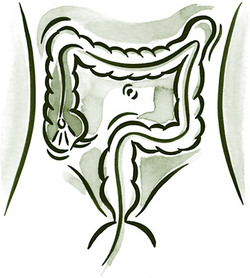Colonoscopy
 Colonoscopy
Colonoscopy
A colonoscopy is a procedure used to inspect the large bowel (colon) and is usually done in a day facility or hospital.
During a colonoscopy a thin flexible tube called a colonoscope is carefully passed into the large intestine. A small camera on the colonoscope transmits an image to a monitor, allowing close examination of the bowel and intestinal lining. A colonoscopy can detect inflamed tissue, ulcers and abnormal growths. The procedure is used to look for early signs of colorectal cancer and
can help doctors diagnose unexplained changes in bowel habits, abdominal pain, bleeding from the anus and weight loss.
It is also used for the screening and surveillance for colorectal cancer or removal of bowel polyps. Colonoscopy with removal of polyps is the best way to prevent bowel cancer.
In order for your doctor to get the best possible view and make the colonoscopy easier, your large bowel needs to be cleaned out of all waste material.
During a colonoscopy a thin flexible tube called a colonoscope is carefully passed into the large intestine. A small camera on the colonoscope transmits an image to a monitor, allowing close examination of the bowel and intestinal lining. A colonoscopy can detect inflamed tissue, ulcers and abnormal growths. The procedure is used to look for early signs of colorectal cancer and
can help doctors diagnose unexplained changes in bowel habits, abdominal pain, bleeding from the anus and weight loss.
It is also used for the screening and surveillance for colorectal cancer or removal of bowel polyps. Colonoscopy with removal of polyps is the best way to prevent bowel cancer.
In order for your doctor to get the best possible view and make the colonoscopy easier, your large bowel needs to be cleaned out of all waste material.
|
© Dr Payal Saxena 2015
|
Website by Dalten Media
|